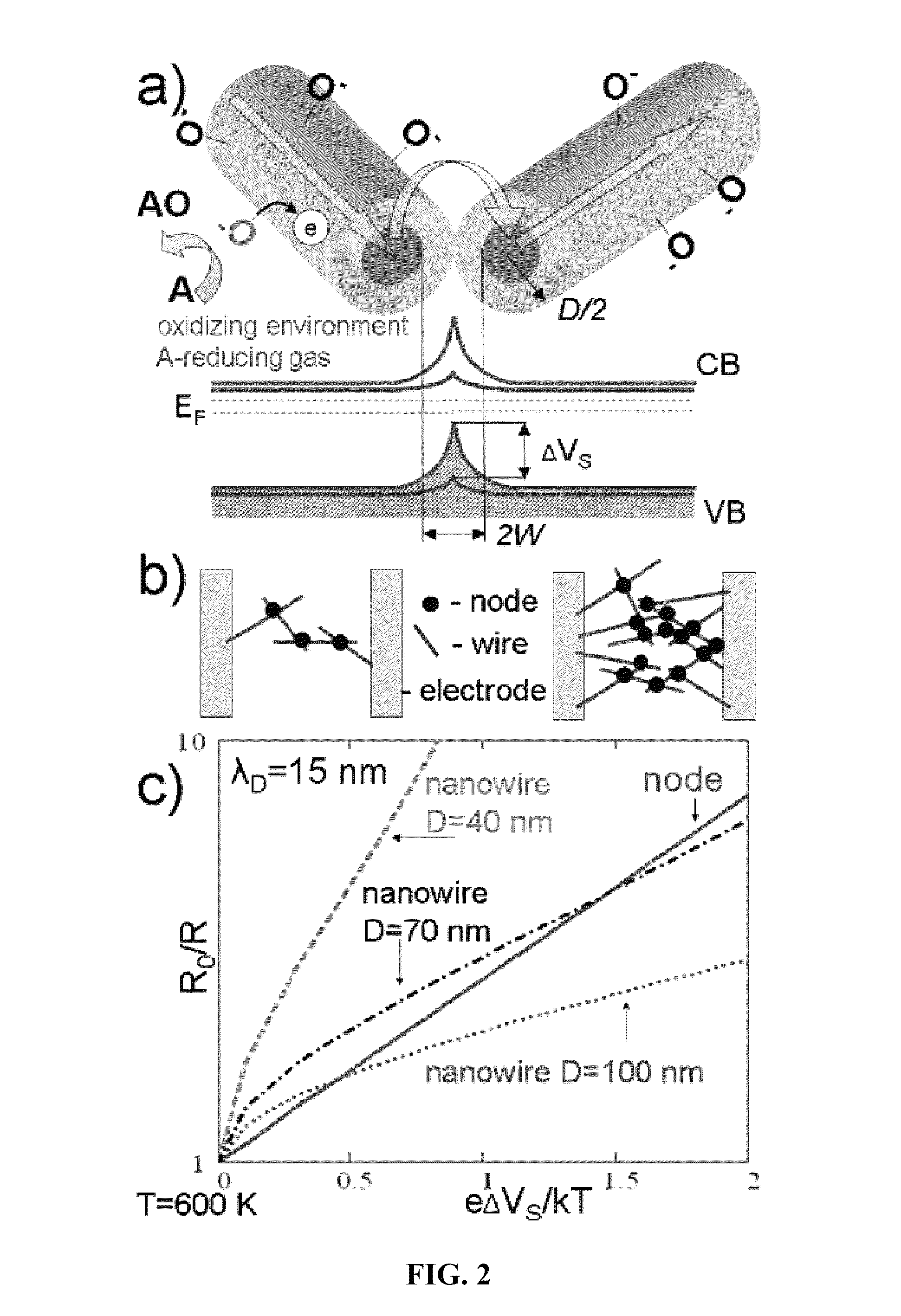Analyte multi-sensor for the detection and identification of analyte and a method of using the same
a multi-sensor and analyte technology, applied in the direction of fluid resistance measurement, instruments, specific gravity measurement, etc., can solve the problems of reducing the stability of the sensor and the gap in technology
- Summary
- Abstract
- Description
- Claims
- Application Information
AI Technical Summary
Benefits of technology
Problems solved by technology
Method used
Image
Examples
examples
Formation of Tin Oxide Nanowire Mats
[0067]Referring to FIG. 7, SnO2 nanowire mats were grown using vapor methods (VS) in a quartz tube furnace. SnO (Sigma-Aldrich, 99.99%) was used as a source material and placed in the center of the furnace. The operating temperature was maintained at about 1280 K. The tube was initially pumped to ca 10−2 Torr and further fed with constant Ar (99.995%) flux of 30 sscm rate. The pressure inside the tube was kept at 200 Torr using a needle valve. SnO2 rutile nanowires with the highest densities and length of about a few hundred microns were generally observed in the tube zone where the temperature was in a range of 900 K to 1100 K. The as-synthesized nanowires were then collected and mechanically dry pressed over the surface of a SiO2 / Si KAMINA substrate with 39 pre-deposited Pt electrodes to avoid potential contamination from the lithography protocols. The resultant layer demonstrated excellent adhesion and sufficient thermo-mechanical stability.
[00...
PUM
| Property | Measurement | Unit |
|---|---|---|
| diameter | aaaaa | aaaaa |
| length | aaaaa | aaaaa |
| distance | aaaaa | aaaaa |
Abstract
Description
Claims
Application Information
 Login to View More
Login to View More - R&D
- Intellectual Property
- Life Sciences
- Materials
- Tech Scout
- Unparalleled Data Quality
- Higher Quality Content
- 60% Fewer Hallucinations
Browse by: Latest US Patents, China's latest patents, Technical Efficacy Thesaurus, Application Domain, Technology Topic, Popular Technical Reports.
© 2025 PatSnap. All rights reserved.Legal|Privacy policy|Modern Slavery Act Transparency Statement|Sitemap|About US| Contact US: help@patsnap.com



